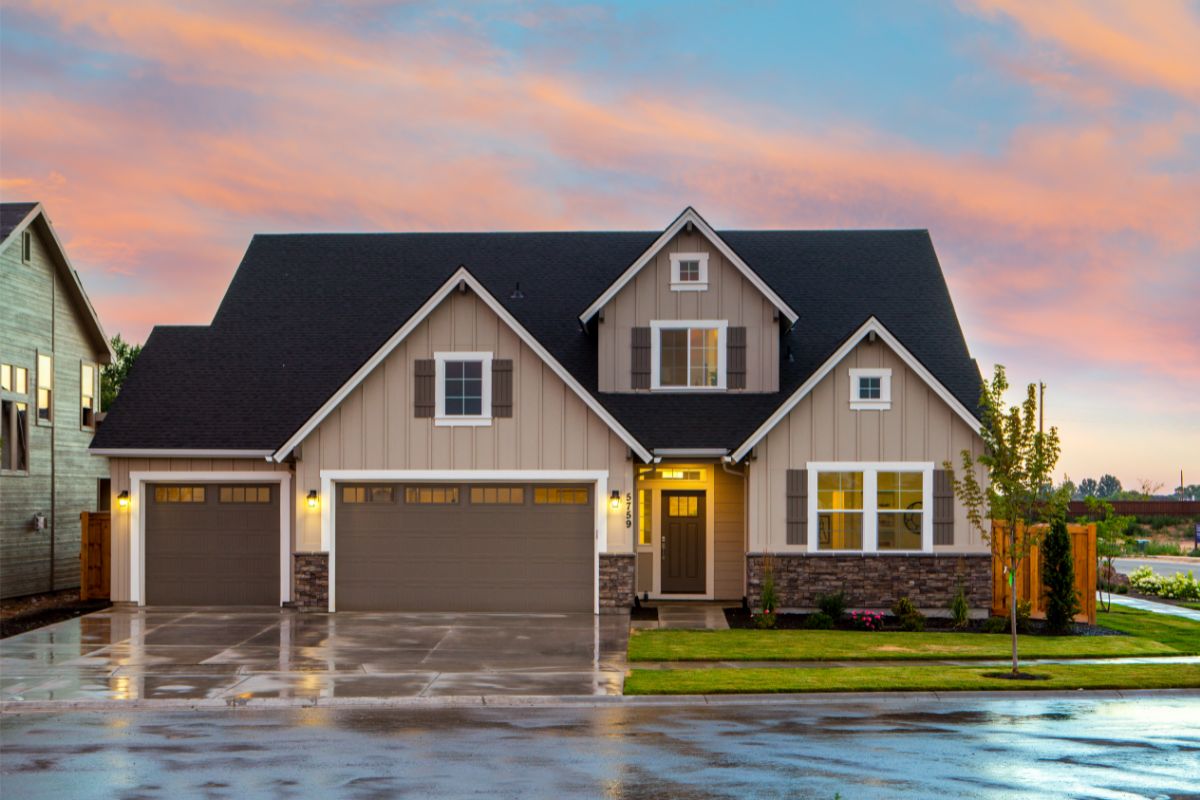You should consider using T1-11 siding if you’re building a cabin, cottage, garage, or shed.
T1-11 siding resembles board and batten siding and provides the outer finish. It can also save you money on sheathing costs for both labor and materials.

We’ll take a closer look at what T1-11 siding is in our article. We’ll also take a look at why you should use it, and whether you should install it over Tyvek.
Before you decide to use Tyvek for your construction project you should decide whether your structure will be air-conditioned or heated.
In both cases, you should use Tyvek under T1-11 siding. This wrap protects your construction from the weather. It also lets out steam created by stove tops and showers.
What Is T1-11 Siding?
T1-11 siding is a type of panel made of wood created in the 1960s. It was a popular home siding option until the 1980s. Composite options such as vinyl siding soon replaced it.
While T1-11 can last for 20 years, most of the structures that used it back in the day are still going strong! T-1 is still available in most home centers and wood stores.
T1-11 sidings are structural 4×8 or 4×10 exterior wood panels that have a single textured side with channels or grooves. This is what ‘T1’ stands for.
This textured side is sometimes sanded down. But the channels and grooves sometimes remain intact to give the panels a rustic feel.
The grooves are often 4 inches or 8 inches apart and cut into the outer layers. The thickness of the panels range from ?”, ?” and ¾”.
The plywood consists of thin layers of veneer. They are glued together under heat and high pressure to fuse the layers together.
Meanwhile, OSB (Oriented Strand Board) consists of strands of wood coated in resin glue arranged in alternate layers.
These layers are heated and pressed together to fuse them into a wood sheet or panel.
Once fused together, both kinds of panels are cut to size. The panels are also sanded before the grooves are cut.
Why You Should Use T1-11 Siding
T1-11 has its fair share of advantages and disadvantages. But if you maintain your T1-11 siding, it is likely to last for years.
T1-11 siding has stood the test of time, lasting over 30 years in most exterior home applications.
T1-11 OSB or plywood siding panels are made in North America using wood. This makes it a more sustainable option when compared to other siding options.
Their multi-layers also make it more resistant to splitting and cracking. T1-11 is also tougher than wood of a similar thickness, and lighter than solid wood.
The large 4×8 or 4×10 ft sheets are also easier to work with, carry, and install. Plus, they cover 32 to 40 square feet in a single piece. If that wasn’t enough, they’re cheaper than other options.
T1-11 siding is available in shiplap and board-and-batten profiles. For a pop of color, you can paint or stain them any color you like, or you can seal them to maintain the natural look.
The panels are also flexible, and are able to follow curved surfaces. This means you can cut them, trim them, and place them in a range of ways depending on how you want them to look.
Plus, you can repurpose leftover sidings and cut-offs or turn them into compost!

T1-11 siding is a cheap, simple, and quick way to sheath and side outbuildings and other structures. It’s also an accessible material whether you are a DIY enthusiast or you do this for a living.
Not only does wood shrink your carbon footprint but it also doesn’t dent, fade, or leave a mark. This is not the case for metal, plastic, or vinyl sidings.
If you maintain and stain T1-11 siding every 3–5 years then it can last for decades.
We cannot stress enough how important proper maintenance is. Untreated wood is vulnerable to rot and water damage. It’s crucial that you reapply paint, sealer, or stains on a regular basis.
Plus, wood is flammable and also vulnerable to insect damage. Unlike plastic or vinyl, wood won’t melt or produce dangerous fumes.
You must also treat or seal joints and cuts to avoid flaking, layer separation, or swelling. These can all make installation harder.
So Do I Need Tyvek Under T1-11 Siding?
T1-11 is a sheathing and siding hybrid placed on the outer face of the studs. House wrap such as tar paper or Tyvek is moisture resistant and wind resistant.
These are great qualities for many kinds of structures. However, the wrap may experience damage before you install the T1-11 panels.
Tyvek is a barrier to moisture, weather, and wind but water vapor can still pass through it. This makes it a great option for installing under T1-11 siding.
It will protect your structure from bad weather and also protect it from condensation. Condensation can lead to damp and mold.
Conclusion
T1-11 siding is simple to install, no matter what kind of construction experience you have.
T1-11 is a versatile material that is often used as an all-in-one siding and sheathing option for cabins, garages, homes, and sheds.
It is also a sustainable option made from renewable materials that can last for years and years!
You will need to attach a moisture barrier to the stud framework when using T1-11 for cooled or heated structures. Tyvek is one of the best options for that.
You should paint, seal, or stain wood siding with a high-quality product. You should also maintain your wood siding to protect it from insect and moisture damage.
We hope that our article has told you all you need to know about T1-11 and Tyvek, so you can embark on your construction project with confidence.
